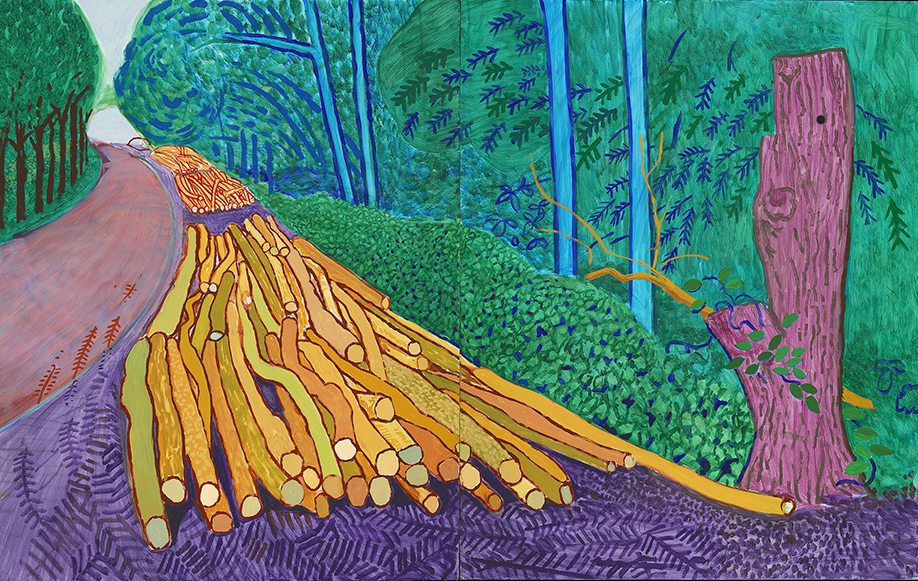But anybody who takes the time to examine it on a closer level will find that this is not the case. It is, in fact, a carefully composed piece of work, showing a delicate balance between forms and colours. The unusual choice of colours – pink and blue trees, along with a purple hue for what appears to be grass or soil – becomes paradoxically naturalistic, as everything in the scene fits together so perfectly as to justify the obviously unreal colour scheme.
David Hockney is one of the key names in contemporary British art. It is impossible to overstate his influence on today’s artistic scene in the United Kingdom – any discussion about this subject will have to mention David Hockney; there is simply no question about it.
Throughout his career, David Hockney has always been a great experimenter. He has made conscious attempts to branch out and to overturn old standards. This has manifested itself in many ways across his oeuvre: sometimes he will consciously emulate the chaotic semi-representation of a child’s drawings; other times, he will go in the complete opposite direction and produce a painting so neat, so precise, that every stroke calls attention to its very artificiality.
In short, “More Felled Trees on Woldgate” is a complex painting, the outward simplicity – even crudity – of which belies the level of sophistication that went into its creation.
This, at the end of the day, is the key to the longstanding appeal of David Hockney as an artist. To a serious lover of contemporary art, it will be essential to have some of David Hockney’s artwork on display at home – and “More Felled Trees on Woldgate” would make the perfect specimen.


